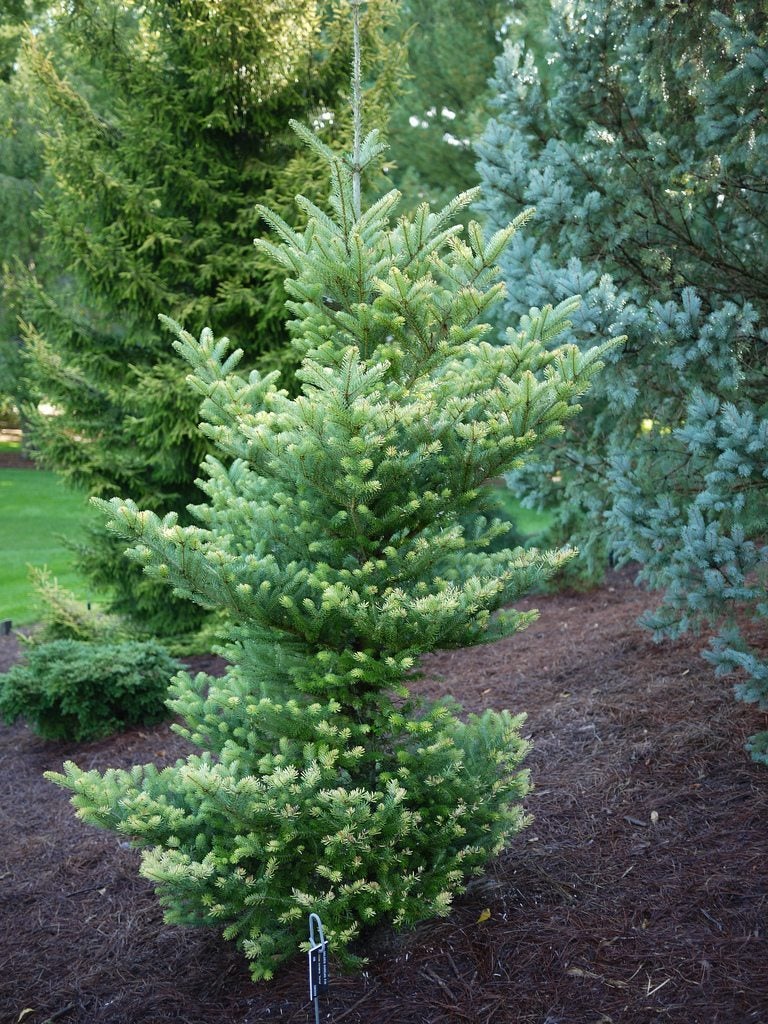Golden Korean Fir Care – Learn About Golden Korean Fir Trees In Gardens


Golden Korean fir trees are compact evergreens known for their remarkable and attractive chartreuse foliage. The cultivar’s irregular spreading form is eye-catching, making the tree an excellent focal point in a garden. For Golden Korean fir information, including tips on growing a Golden Korean fir, read on.
Golden Korean Fir Information
Golden Korean fir trees (Abies koreana 'Aurea') are slow-growing conifers with truly beautiful foliage. The needles grow in golden, then mature into chartreuse. They remain chartreuse throughout the winter. Another colorful feature of the trees is the fruit that appears as cones. When these are immature, they are a deep violet-purple. As they mature, they lighten into tan. Golden Korean fir trees are not for every setting. They are artistic in appearance and somewhat unusual both in color and in growth habit. A Golden Korean fir can start out with a horizontal habit, then develop a central leader at a later point. Some grow into regular pyramid shapes as they mature. Expect your Golden Korean fir trees to stay at 20 feet (6 m.) or under in height, with a spread of around 13 feet (4 m.). They can be planted under electric lines without worry since they grow very slowly. They can live for up to 60 years.
Growing Golden Korean Fir Trees
If you are ready to start growing Golden Korean fir trees, you need to know that this cultivar thrives in USDA plant hardiness zones 5 to 8. The trees need a sunny or partly sunny location. These trees prefer organically rich soil that is well-draining and acidic. Golden Korean firs are not good for inner cities or street placements since they are intolerant of urban pollution. Once you get your tree planted, you’ll need to know about Golden Korean fir care. The trees are relatively easy to care for and require little maintenance, especially if planted in a wind-protected area. You’ll have to provide occasional water for these firs, especially in hot, dry weather. If you love in a chilly area or the tree is planted in an exposed location, apply a thick mulch around the root zone in winter.
Sign up for the Gardening Know How newsletter today and receive a free copy of our e-book "How to Grow Delicious Tomatoes".

Teo Spengler is a master gardener and a docent at the San Francisco Botanical Garden, where she hosts public tours. She has studied horticulture and written about nature, trees, plants, and gardening for more than two decades, following a career as an attorney and legal writer. Her extended family includes some 30 houseplants and hundreds of outdoor plants, including 250 trees, which are her main passion. Spengler currently splits her life between San Francisco and the French Basque Country, though she was raised in Alaska, giving her experience of gardening in a range of climates.